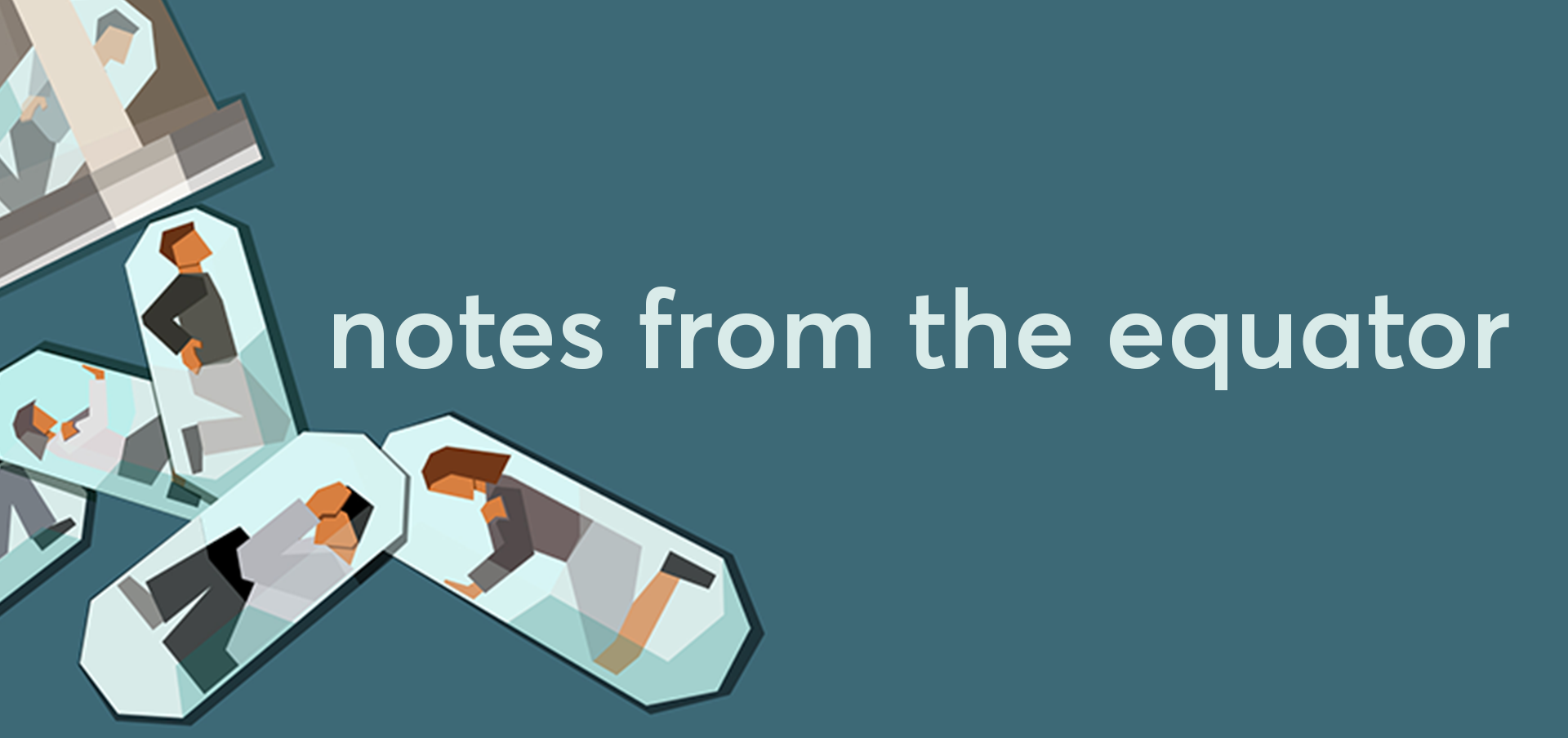What's lurking beneath the surface?
|
|

|
|
When sociologist Émile Durkheim argued that deviance is necessary for the health of societies, he might have failed to consider how it ensnares vulnerable individuals too. In her piece, Asyura Salleh demystifies the drug trade of the Golden Triangle and introduces the unlikely people who sustain it.
|
|

|
|
The Asia-Pacific region has been dealt a bad hand in terms of vulnerability to natural disasters. It is surrounded by a ring of more than 450 active volcanoes, hosts flood-prone river basins such as the Mekong, and experiences regular tropical cyclones. Disaster mitigation measures have been rolled out over the years, but are they enough to stop these ticking time bombs?
|
|

|
|
Much like with natural disasters, it's nearly impossible to escape the onslaught of fake news in today's interconnected world. But are there certain sociopolitical conditions in Asia that make fake news endemic to the region?
|
|
Medium's Humans of Kontinentalist
|
|
Sink your teeth into these yummy charts!
|
|
|
What's an indelible part of Halloween? Candies, of course! So to get into the spirit of things, we created some charts using our favourite candies, with a brief tidbit about their functions.
|
|
|
Pictorial unit chart:
This chart is useful when your data can be broken up into standardised units. Here, one gummy bear represents 100kg, and you can see how the weight of different species of bears is shown accordingly. Usually, an icon is used to show distribution and comparison across different categories, such as a country's ethnic make-up, games won by football clubs, and so on. For an impactful visualisation, it helps if your data has outliers that show contrast.
|
|
|
Take care not to split your icon into much smaller fragments, like 1/4, as it might not be immediately obvious and increases the likelihood for error. For instance, did you notice how we've split the last red gummy bear in half?
Dot plot:
Dot plots have a similar function to pictorial unit charts: they use the same units to compare the distribution of different groups. Dot plots are also similar to bar charts, except that the former look less weird without a y-axis denoting quantity.
|
|
So, when should you use this type of dot plot? One less orthodox reason is for hands-on activities, such as a polling section in a museum. Dot plots are simple to grasp, and people can see how their vote compares to others' in real time.
Fun fact—someone did this to investigate if yellow really is the most common colour in a Skittles packet. Close enough.
Illustration diagram:
This is probably one of the most intuitive visualisations. You may have even drawn it yourself labelling the mitochondria in your biology tests, for instance.
For this chart, your illustration or image should be the star. An alternative to writing the labels by the side (shown here) is labelling each point with a number and having a list with the numbers with a text explanation in a separate section.
I would love to illustrate this, but I've already gobbled up the burger. 😅
|
|
If you want to jazz up your illustration further, you can consider layering other types of visualisations onto it. For instance, you can layer a proportional area chart to show magnitude, or add small multiples of line charts beside your graphic to show your data across time.
Tally chart:
A tally chart is exactly what it sounds like: each line (in this case, each Pocky stick) represents one count, and each group represents five counts. A similar tallying system exists in Chinese, too, with five strokes equating to the character "正".
Here, I recorded the number of times Joe Biden and Donald Trump mentioned the word "American" (and its variants, such as "Americans") during the first U.S. presidential debate, based on a transcript. In case you're curious, the only two times Trump mentioned "American" were in reference to African Americans (28:34).
|
|
In my experience, I've hardly seen tally charts used as data visualisations (correct me if I'm wrong!). This may be because readers would still need to count each group of five themselves, and it might be too overwhelming if there are too many categories to count and compare. One excellent workaround is this infographic by GOOD and Open. They use a tally chart to visualise the cumulative 1,125 wasted years innocent people have spent on death row.
|
|
No tricks up our sleeves, just treats!
|
|
Because real life is a scary place, we're prescribing a dose of escapism to cap off this month's newsletter. Here are some links related to Halloween:
- Partake in one of Twitter's most enduring Halloween traditions—create your dark alter ego with this spooky name generator.
- Having your family stuck at home just means having more opportunities to scare them. Build a blanket fort and hunker down while master storyteller Neil Gaiman regales everyone with the chilling tale "Click Clack the Rattle Bag".
- Dressing up this Halloween? Check out this illustrated guide showing the dimensions of pop-culture characters and real-life personalities, and find your perfect fit.
- We're not encouraging you to go out, but if you have to, try avoiding these spots in Singapore and London.
- Homebodies, take a stab at our game based on the eighteen levels of hell folklore!
- Fancy yourself as part of the cerebral crowd? Take a gander at this research project, which compares the visual and textual similarities of witch films in the United States. Or, create your own story with this dataset about the 10,000+ witch trials that have occurred in Europe.
|
|
|
|
|

